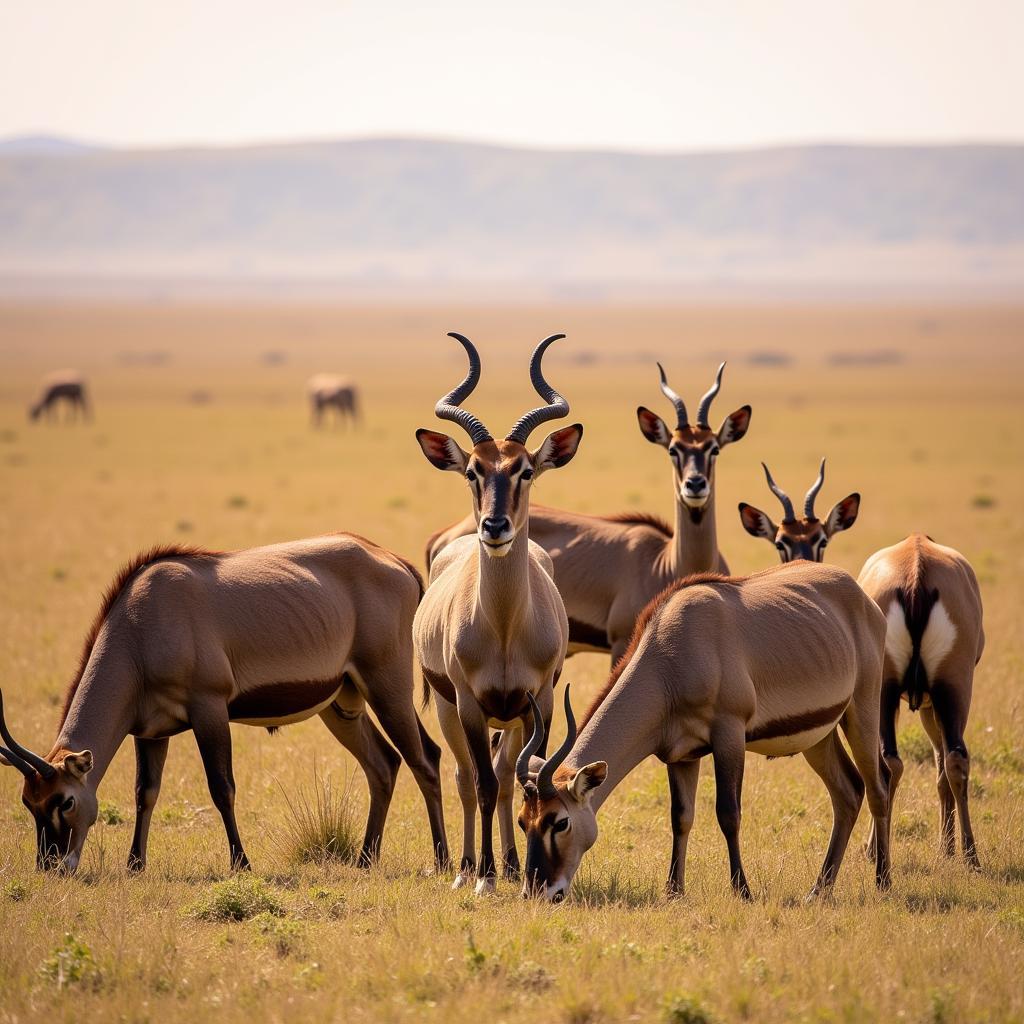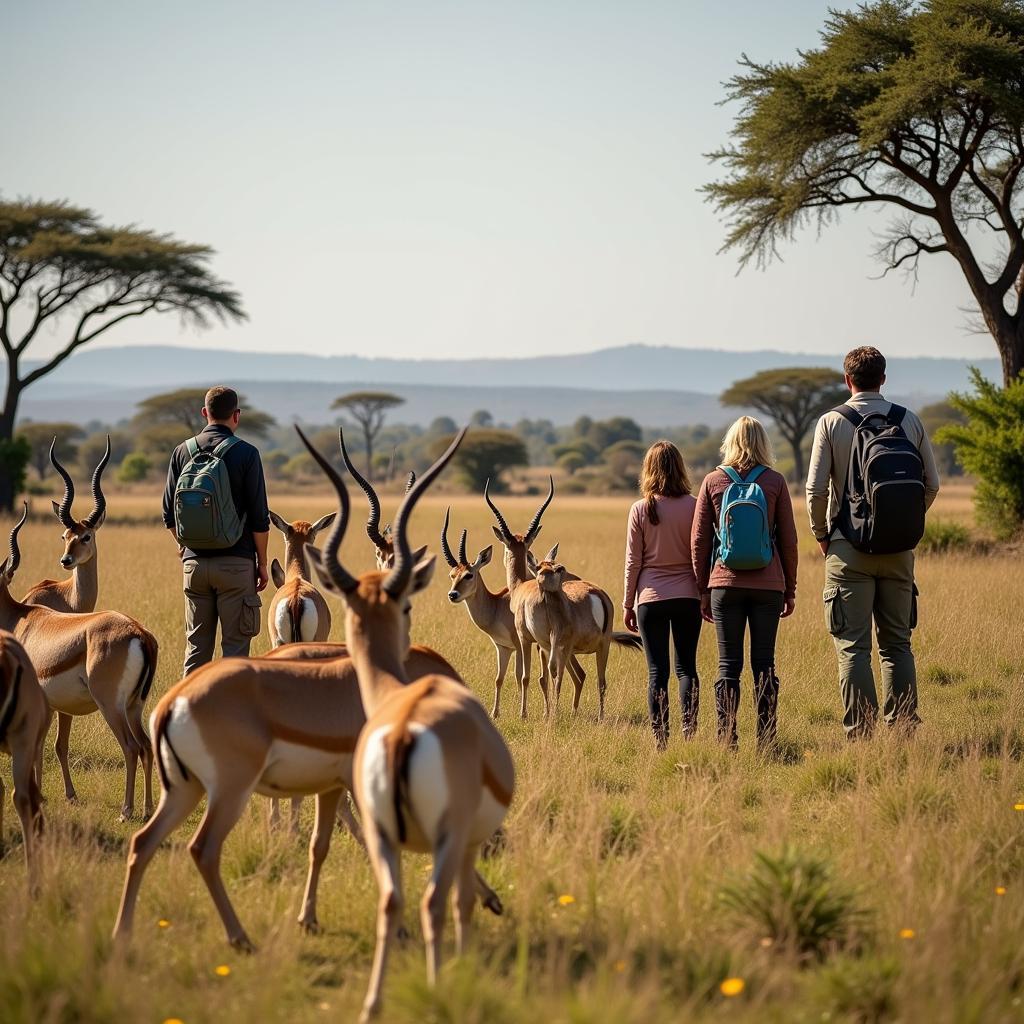African Antelope Identification: A Comprehensive Guide
Africa, a continent teeming with diverse wildlife, is home to an astounding variety of antelope species. From the majestic eland to the diminutive dik-dik, these graceful herbivores captivate with their elegance and fascinating adaptations. This comprehensive guide delves into the world of African Antelope Identification, equipping enthusiasts and aspiring naturalists with the knowledge to distinguish between these fascinating creatures.
Navigating the Antelope Kingdom: Key Characteristics and Their Significance
Identifying African antelope requires a keen eye for detail and an understanding of their defining characteristics. Size, horn shape, coloration, and markings all play crucial roles in distinguishing one species from another.
Size and Stature: Antelope size varies significantly, with the towering eland reaching heights of up to 6 feet at the shoulder, while the tiny royal antelope stands a mere 10 inches tall. Observing the overall size and build of an antelope provides the first clue to its identification.
Horns: A Tale of Shape and Size: Horns are a prominent feature in most antelope species, and their shape and size are crucial for identification. From the long, spiraled horns of the kudu to the short, spiked horns of the klipspringer, each species exhibits a unique horn structure. Understanding these variations is key to accurate identification.
A Palette of Colors and Patterns: Antelope coloration and markings provide further clues for identification. While some species sport a uniform coat, others display striking patterns and markings. For instance, the sable antelope is renowned for its sleek, black coat, while the zebra-like stripes of the bongo make it easily recognizable.
Behavioral Cues: Unveiling the Antelope’s Story: Observing an antelope’s behavior can provide valuable insights into its identity. Some species, like the impala, are highly social and gather in large herds, while others, like the duiker, are solitary and elusive.
 Herd of African Antelope
Herd of African Antelope
Delving Deeper: Notable African Antelope Species
With a basic understanding of antelope characteristics, let’s explore some notable species found across the African continent:
The Greater Kudu: Recognized by its large size and impressive, spiraled horns, the greater kudu is a true icon of the African bush.
The Sable Antelope: With its striking black coat, the sable antelope embodies elegance and power. The males sport magnificent, curved horns, adding to their majestic appearance.
The Springbok: Known for its incredible leaping ability, the springbok is a symbol of grace and agility. Its distinctive markings and unique behavior make it easily recognizable.
The Gerenuk: Often referred to as the “giraffe gazelle,” the gerenuk possesses an elongated neck and legs, allowing it to reach foliage high in trees.
The Dik-Dik: One of the smallest antelope species, the dik-dik is a master of camouflage, disappearing effortlessly into its surroundings.
 African Antelope Identification Chart
African Antelope Identification Chart
The Thrill of the Hunt: Tips for Successful Antelope Identification
Location, Location, Location: Different antelope species inhabit specific regions and habitats. Familiarizing yourself with the distribution maps of various species can significantly narrow down your search.
Timing is Key: Antelope behavior varies throughout the day and across seasons. Understanding their activity patterns can increase your chances of encountering specific species.
Optics are Your Friend: A good pair of binoculars is an indispensable tool for antelope identification, allowing you to observe their features from a distance without disturbing them.
Field Guides: Your Pocket Companion: Carrying a comprehensive field guide with detailed descriptions and illustrations can be invaluable for on-the-go identification.
Embrace Technology: Several mobile apps dedicated to wildlife identification can be helpful tools, especially for beginners.
 African Antelope Safari
African Antelope Safari
Conclusion: A Journey of Discovery and Appreciation
Identifying African antelope is a rewarding experience that deepens our appreciation for these remarkable creatures. By understanding their unique characteristics and behaviors, we gain a greater understanding of the delicate balance of life in African ecosystems. So, grab your binoculars, pack your curiosity, and embark on an unforgettable journey of African antelope identification.
FAQs:
Q: What is the largest antelope species in Africa?
A: The eland, reaching heights of up to 6 feet at the shoulder, holds the title of the largest antelope species in Africa.
Q: Which antelope is famous for its incredible jumping ability?
A: The springbok is renowned for its extraordinary leaps, often reaching heights of over 10 feet.
Q: Where can I find a comprehensive field guide for African antelope identification?
A: Reputable online retailers and bookstores specializing in nature and wildlife publications offer a wide selection of field guides for African antelope identification.
For further assistance with African antelope identification or any inquiries regarding African wildlife, please don’t hesitate to contact us:
Phone: +255768904061
Email: kaka.mag@gmail.com
Address: Mbarali DC Mawindi, Kangaga, Tanzania.
Our dedicated team is available 24/7 to assist you.

